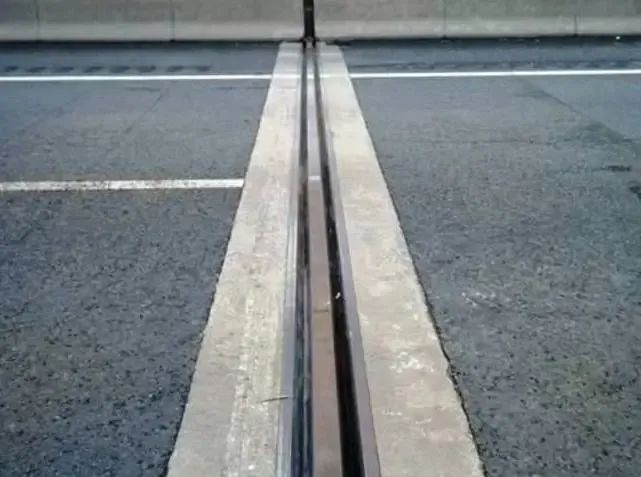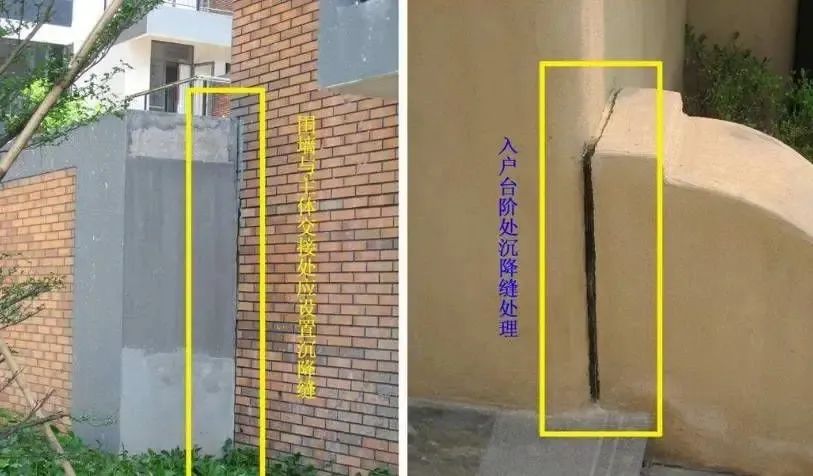When working on waterproofing projects we often talk about the "three joints". But what exactly are the three joints? Many waterproofing professionals dread dealing with leaks in these joints because of the complexities involved in repairing them. Today, let's take a deep dive into understanding the three joints in construction.
The three joints refer to expansion joints (temperature joints), settlement joints and seismic joints, collectively known as deformation joints, which are common structures in construction.
Buildings are susceptible to deformation or damage due to temperature changes, uneven foundation settlement and seismic activity. Therefore, during the design phase, buildings should be divided into several independent sections to allow them to adapt freely and independently to changes. These vertical separations in the building are called deformation joints, including expansion joints (affected by temperature), settlement joints and seismic joints.
1. Expansion joints

Conditions for expansion joints:
- When the length of the building exceeds a certain limit.
- When the building plan has complex changes.
- When there is a significant change in the building structure type.
Placement principles:
Expansion joints are usually placed along the length of the building at regular intervals or where there are significant structural changes, leaving vertical gaps to divide the building components above the foundation into independent parts that can expand and contract horizontally. The foundation does not usually need to be divided as it is less affected by temperature changes.
Joint spacing:
The maximum spacing of expansion joints should be determined based on the construction of different materials, as detailed in the design specifications for various masonry and reinforced concrete structures.
Joint construction:
The width of expansion joints is generally between 20-40 mm, typically 30 mm.
Other requirements:
Wall expansion joints are normally straight joints. For walls thicker than 240mm, staggered or keyed joints may be used. External wall expansion joints often use flexible waterproof materials such as asphalt, foam plastic strips and sealant, with galvanised iron or coloured steel plates covering the joint. Internal wall joints are finished with materials such as wood or metal sheeting as part of the interior finish.
Floor and ceiling expansion joints: These joints are filled with materials such as asphalt, foam plastic strips and sealant and covered with metal, concrete or rubber-plastic moveable covers to ensure smooth, watertight and hygienic surfaces. Ceiling expansion joints, which are integrated with interior finishes, use materials such as metal plates, wood or rubber-plastic plates, with covers fixed on one side to allow horizontal movement.
Roof expansion joints: These are used where roof levels are the same or staggered. Waterproof sealant is used to seal where levels are the same, and additional low walls are built on either side to provide waterproof protection where levels are different. The joints are covered with galvanised iron, coloured steel sheet, aluminium or stainless steel.
2. Settlement Joints
Settlement joints address differential settlement due to varying foundation bearing capacity or load differences to prevent damage to the structure.

Conditions for settlement joints:
- When buildings are constructed on different foundations with the potential for uneven settlement.
- Where adjacent parts of a building have different foundation shapes, widths and depths.
- Where there are large differences in height (more than 10 m), significant differences in loading or changes in structural form between adjacent parts of a building.
- Where the building has a complex layout and weak connection points.
- Between new or extended buildings and existing buildings.
Settlement principles:
Expansion joints must vertically separate the foundation, walls, floors and roof to form independent units capable of free settlement.
Joint design:
Settlement joints can also act as expansion joints. The width depends on the foundation conditions and the height of the building.
Foundation settlement joints: These should penetrate the foundation, with masonry and frame structures treated accordingly.
Wall, floor and roof expansion joints: These are covered with galvanised iron, aluminium alloy or coloured steel sheeting. Floor and roof joints are treated similarly to expansion joints, taking into account the direction of deformation to minimise the effects of uneven settlement.
3. Seismic joints
Seismic joints mitigate or prevent damage from earthquakes by dividing buildings into simple, uniformly rigid, independent parts with pre-determined spacings to reduce the effects of collisions between adjacent structural units.
Conditions for Setting Joints:
In areas with seismic fortification intensity of 7-9 degrees, seismic joints are required in the following situations:
· When the height difference between adjacent building facades exceeds 6m.
· When there are staggered floors with significant height differences.
· When there are notable differences in the stiffness and mass of adjacent building parts.
Joint Width:
The width of seismic joints is typically 50-100mm. For multi-story and high-rise reinforced concrete buildings, the minimum width should meet the following requirements:
① For buildings up to 15m high, the joint width is 70mm.
② For buildings over 15m, the width increases with height and seismic intensity: 20mm for every 5m in 6-degree areas, every 4m in 7-degree areas, every 3m in 8-degree areas, and every 2m in 9-degree areas.
Seismic joints should run through the entire building height, and usually, the foundation need not be separated unless the plan is complex. Double walls or columns should be set on either side of the joint to enhance overall rigidity. The construction of seismic joints in walls, floors, and roofs is similar to settlement joints, and they should not be designed as staggered or keyed joints to maintain their effectiveness.




